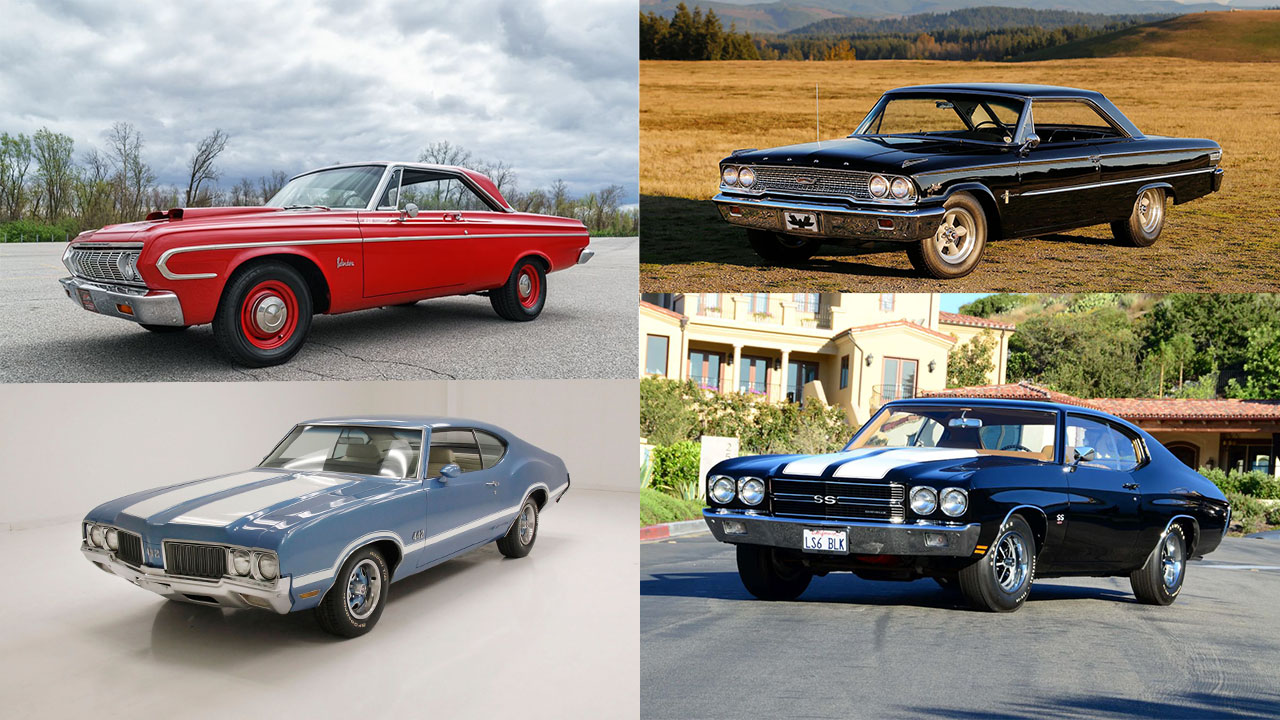The term “sports car” is frequently used loosely in the automotive industry today, often applied to any vehicle with speed and a sporty appearance, regardless of its actual classification.
However, purists agree that true sports cars have traditionally been high-performance, two-door vehicles many insisting they must also be convertibles.
A prime example of a classic sports car is the Chevrolet Corvette C1, which perfectly embodies these traditional characteristics.
As the 1960s arrived, American automakers realized that striking designs and convertible styling were no longer enough.
Instead, they began outfitting their vehicles with immense power, giving rise to an entirely new segment: the muscle car.
The remnants of the horsepower wars that defined the golden era of the 1960s and 1970s remain so potent that they can still outmatch modern sports cars in raw power.
For a contemporary point of comparison, the Toyota GR Supra serves as an excellent benchmark.
This modern sports car features a 3.0-liter BMW-sourced B58 turbocharged inline-six, delivering 382 horsepower and launching the car from 0 to 60 mph in just 3.9 seconds.
However, despite its impressive performance, it still falls short in power compared to any of the classic American cars on this list.
9. 1970 Plymouth GTX: 390 HP
Specifications
- Engine: 440 cubic-inch Magnum V8
- Power: 390 hp
- Torque: 490 lb-ft
Marketed by Plymouth as the “Gentleman’s muscle car,” the GTX offered a more refined and premium alternative to its contemporaries, such as the Dodge Charger and Chevrolet Camaro.
However, it did not compromise on power, as the 1970 model year came equipped with a 440 Magnum V8 producing 390 horsepower and 361 lb-ft of torque.
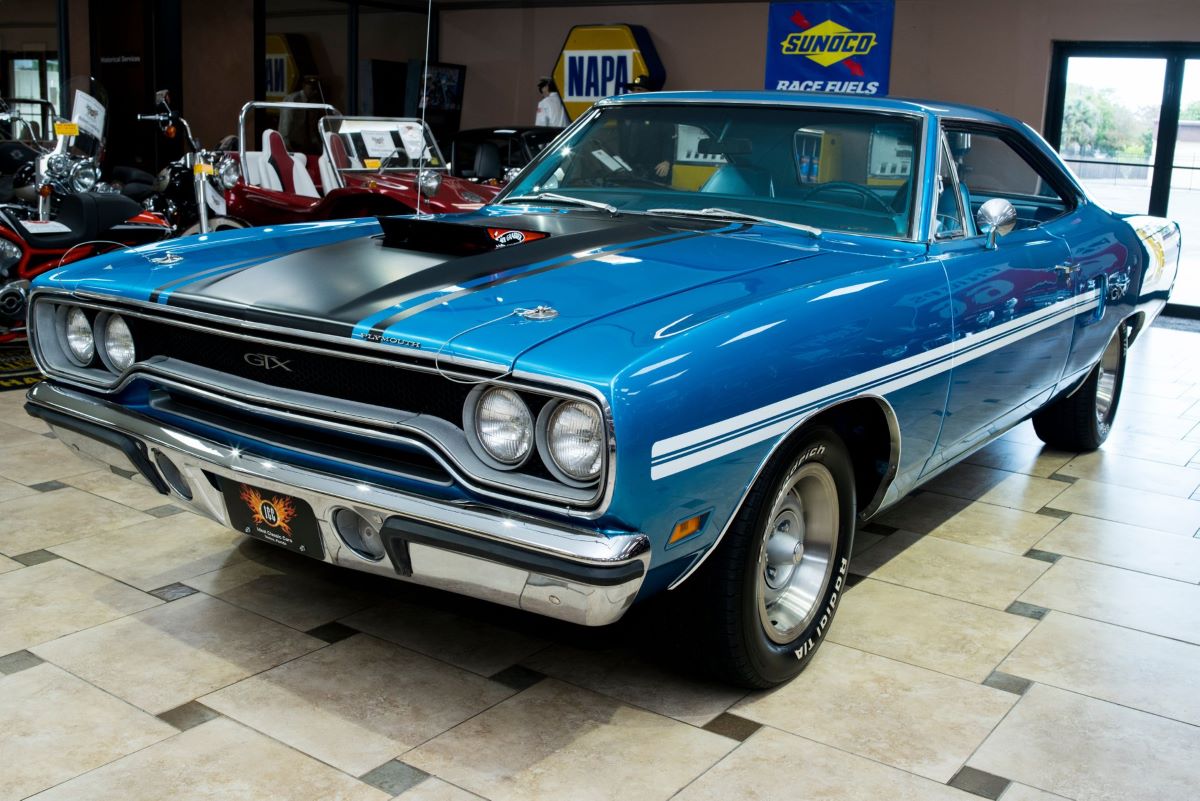
This powerful Magnum V8 was a staple in nearly all high-performance Mopar muscle cars of the 1960s, including the Plymouth Road Runner, as well as Dodge models like the Coronet, Charger, and Challenger R/T.
Widely known as the “Six-Pack,” the 440 Magnum V8 has become so iconic that Dodge is reviving the name for its new internal combustion engine (ICE) Chargers in the 2025 model year.
Given their historical significance, Mopar vehicles equipped with this engine have become highly sought after, with the Dodge Challenger R/T commanding prices exceeding $100,000 on Hagerty today.
Also Read: 10 Best European Sports Cars That Rival High Performance Supercars
8. 1970 Oldsmobile Cutlass 442: 390 HP
Specifications
- Engine: 455 V8
- Power: 390 hp
- Torque: 500 lb-ft
The Oldsmobile 442 derives its name from its key performance components: a 4-barrel carburetor, a 4-speed manual transmission, and dual exhaust (4-4-2).
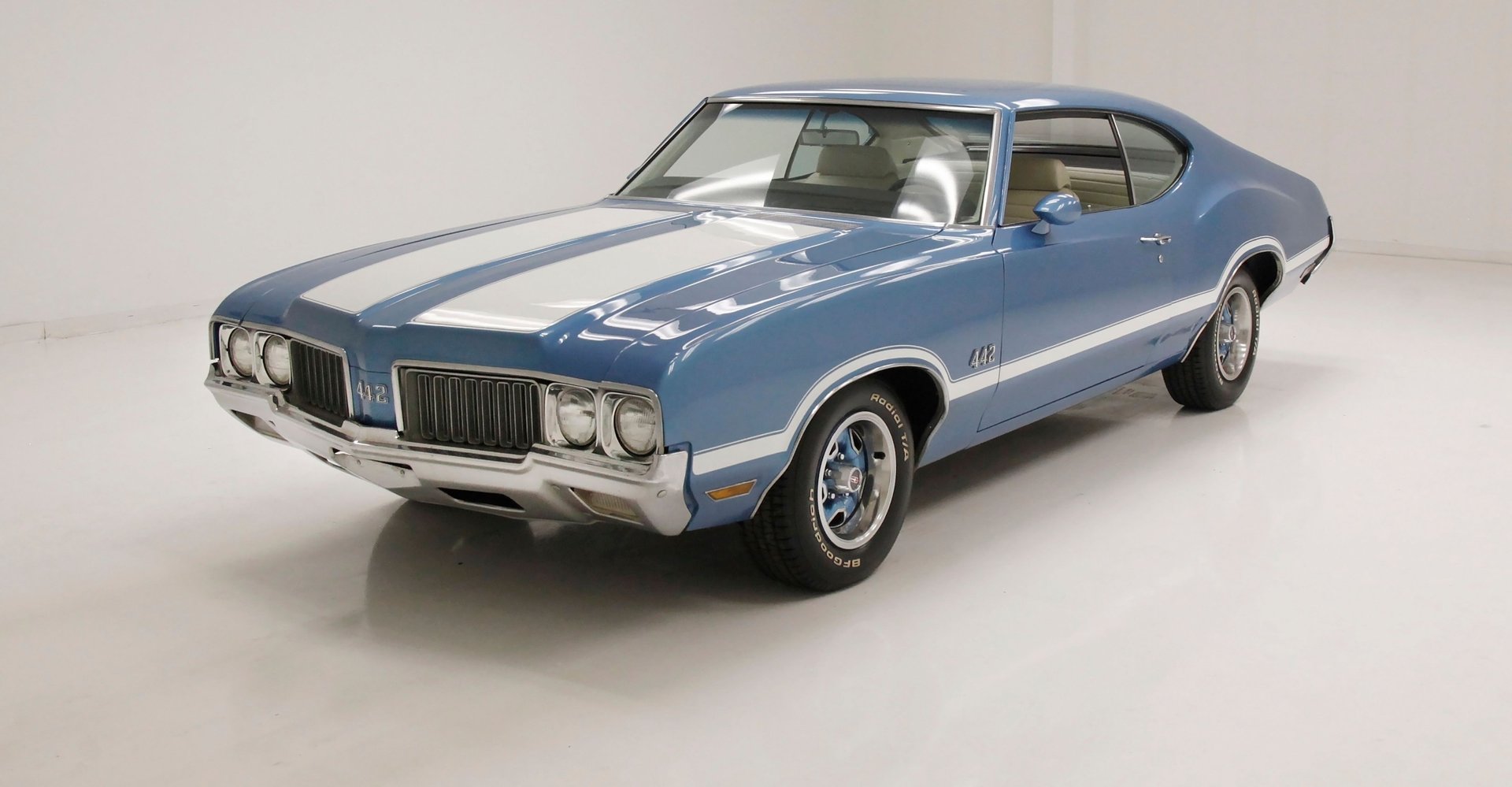
Renowned for its staggering torque output, the Oldsmobile 442 was powered by a massive 455 cubic-inch big-block V8, making it one of the fastest muscle cars of its time.
As noted by Hagerty, a base 1970 Oldsmobile 442 can accelerate from 0 to 60 mph in under six seconds.
While this might not match the speed of a modern 382-horsepower Toyota Supra, during the 1970s, this level of performance solidified its place as a must-have for any muscle car enthusiast.
7. Cadillac Eldorado: 400 HP
Specifications
- Engine: 500 cubic-inch V8
- Power: 400 hp
- Torque: 550 lb-ft
While General Motors continues to equip some of its flagship vehicles, such as the Escalade and the CT5-V Blackwing, with V8 engines, the early-1970s Cadillac Eldorado represents the pinnacle of the brand’s luxury and refinement.
The 500 cubic-inch big-block V8 found in the 1970 Eldorado may have been excessive, but its immense torque and power helped cement its legendary status.
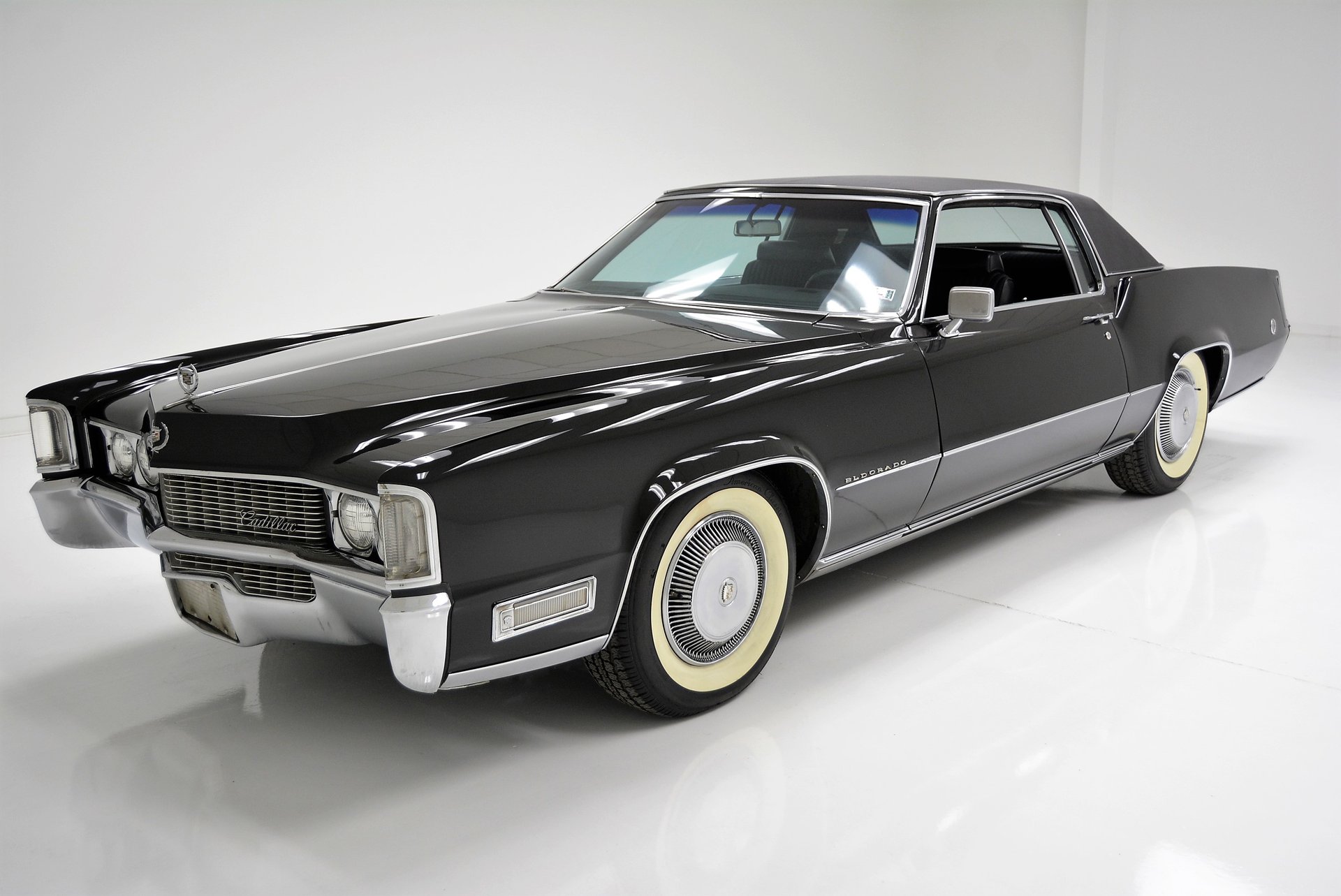
Producing 400 horsepower and an astounding 550 lb-ft of torque, this engine holds the title for the highest-torque big-block V8 of its era.
Additionally, it remains the largest V8 ever installed in a production car. The 500ci V8 was only manufactured between 1970 and 1976, making it a rare and historically significant powerhouse.
6. 1962 Pontiac Catalina Super Duty: 405 HP
Specifications
- Engine: 421 cubic-inch V8
- Power: 405 hp
- Torque: 425 lb-ft
In 1962, Pontiac introduced a special 421 cubic-inch V8 as part of its Super Duty performance program, designed to dominate both NASCAR and NHRA quarter-mile drag races.
According to Hemmings, this engine lived up to expectations, securing victory in 30 out of the 52 races during the 1961 Grand National series.
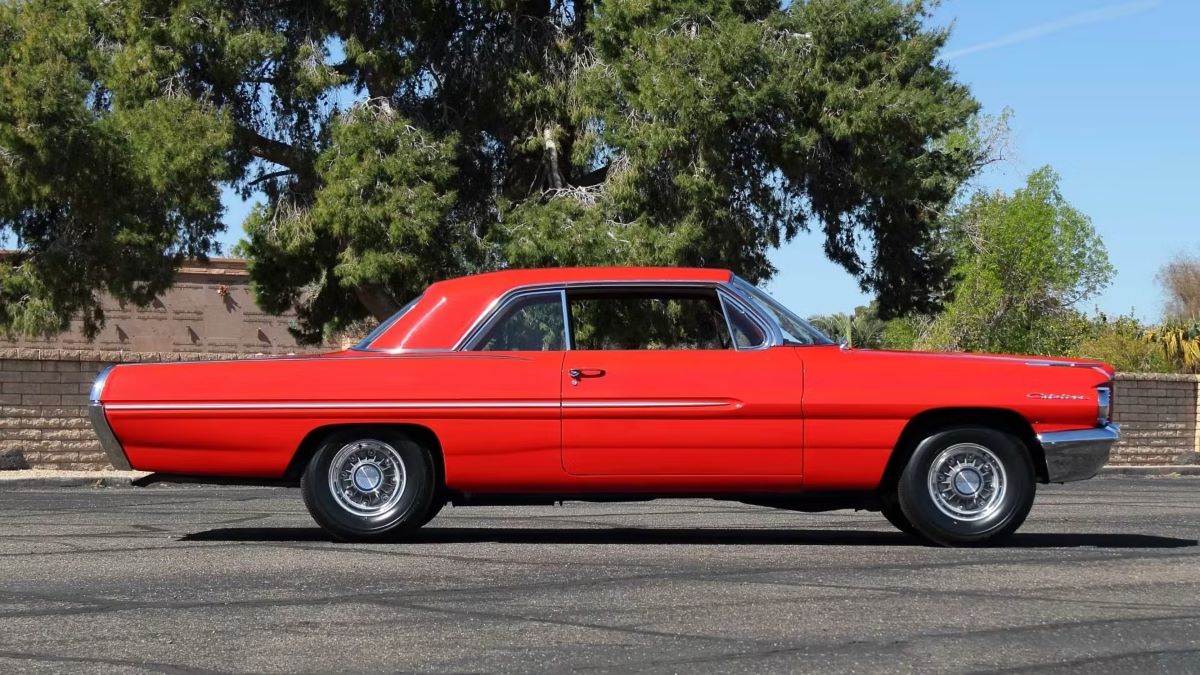
Now regarded as an iconic powerplant, the Pontiac 421 Super Duty V8 was incorporated into several limited-production models to meet homologation requirements, including the lightweight Catalina Super Duty.
Despite being fully street-legal, the 1962 Catalina Super Duty remains a highly sought-after classic and was one of the fastest muscle cars of its time three years before the muscle car segment was officially established.
While its displacement might suggest otherwise, the Super Duty V8 is not classified as a big block. In fact, Pontiac never produced a big-block V8 throughout its history.
5. 1964 Plymouth Belvedere 426 Max Wedge: 425 HP
Specifications
- Engine: 426 cubic-inch Max Wedge V8
- Power: 425 hp
- Torque: 480 lb-ft
Before the Plymouth Belvedere underwent a redesign in 1965 eventually giving rise to models like the Satellite, Road Runner, and GTX it was offered in a high-performance configuration featuring an engine that preceded the legendary 426 HEMI.
This powerhouse, known as the Max Wedge, was a 426 cubic-inch V8 that provided the most powerful versions of the 1962-1964 Belvedere with an impressive 425 horsepower and 480 lb-ft of torque.
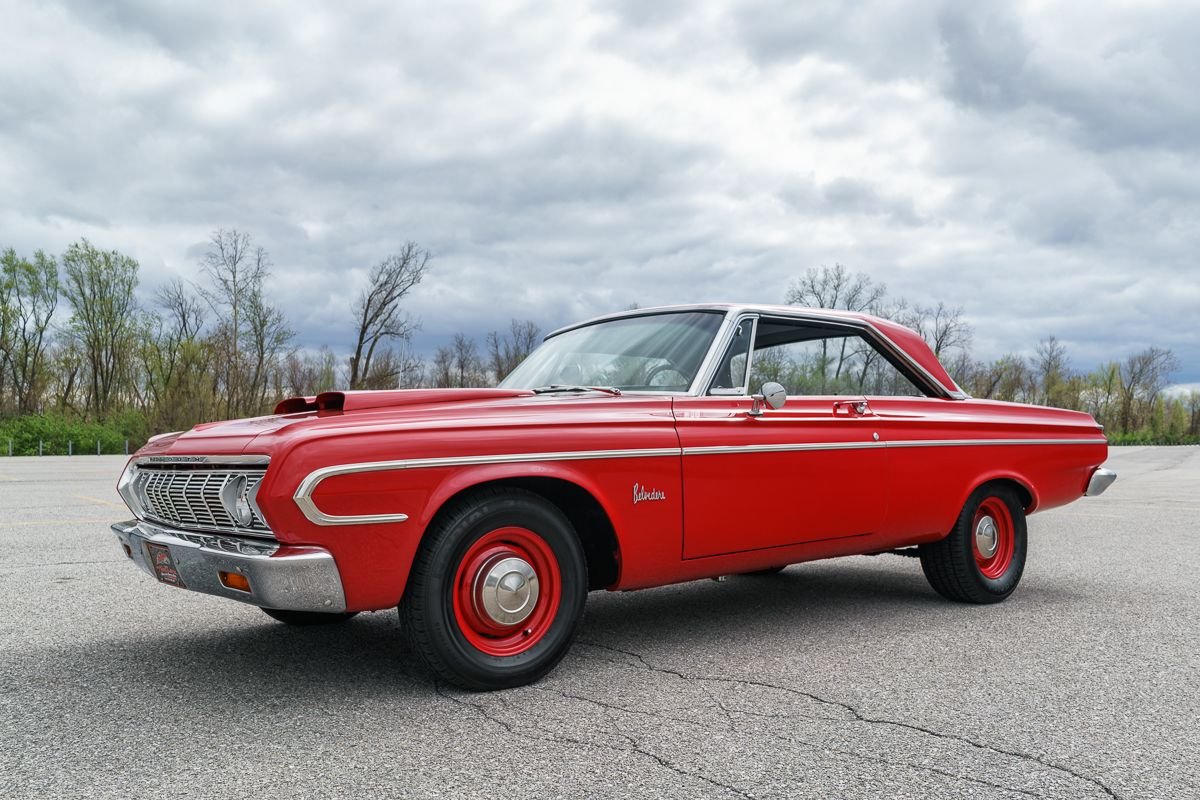
Although both the Max Wedge 426 and the HEMI 426 share the same displacement, they are fundamentally different engines.
The key distinction lies in their combustion chamber design: while the HEMI derives its name from its hemispherical combustion chamber, the Max Wedge utilizes a wedge-shaped design.
Although both engines produced similar power figures, Chrysler implemented the Max Wedge before the HEMI became a household name. Unfortunately, the Max Wedge did not survive beyond the intense horsepower wars of the 1960s.
4. 1967 Dodge Coronet R/T: 425 HP
Specifications
- Engine: 426 cubic-inch HEMI V8
- Power: 425 hp
- Torque: 480 lb-ft
By now, anything bearing the “HEMI” badge is regarded as one of the most legendary V8 nameplates to emerge from the 1960s.
The 426 HEMI earned the nickname “The Elephant” due to its heavy cast-iron construction, which contributed to its nearly 800-pound weight. This powerhouse was a staple in NASCAR races and was even driven by iconic figures such as Richard Petty.
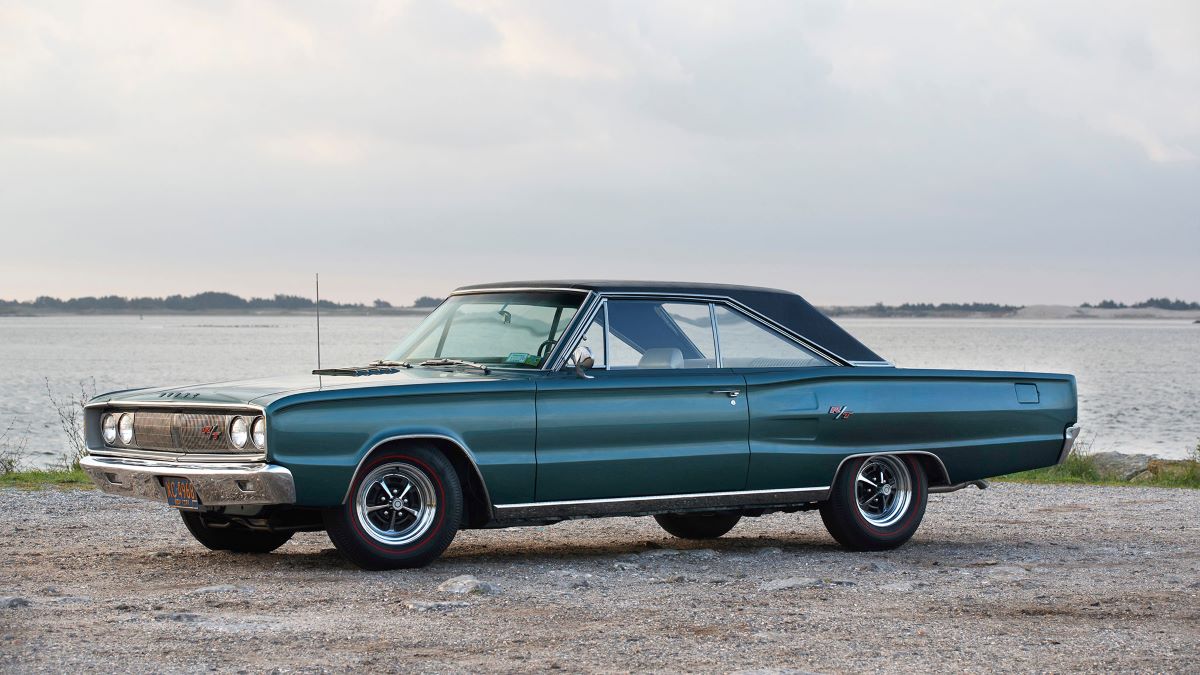
Despite its weight, the 426 HEMI delivered a consistent 425 horsepower and 480 lb-ft of torque across all HEMI-equipped models, including the Plymouth Road Runner, HEMI ‘Cuda, and Dodge Charger R/T.
One HEMI-equipped model that often flies under the radar is the Dodge Coronet R/T. Offered with the 426 HEMI option between 1966 and 1969, the Coronet R/T came with a high-performance package that included a sport-tuned suspension and upgraded brakes.
This model wasn’t just about raw power it had the handling to match. A HEMI-powered Coronet R/T even secured victory in the 1968 NASCAR Grand National Championship, driven by David Pearson.
3. 1963-1967 Ford Galaxie 500 R-Code 427: 425 HP
Specifications
- Engine: 427 cubic-inch V8
- Power: 425 hp
- Torque: 480 lb-ft
In 1963, Ford expanded the Galaxie 500’s engine lineup by introducing a race-bred 427 cubic-inch V8, specifically designed to meet NASCAR’s homologation requirements.
This high-performance engine made an immediate impact on the track, securing the top two positions at the 1963 Daytona 500.
For 1963, the Galaxie 427 was available in two configurations: the Q-Code (producing 410 horsepower) and the R-Code (pushing out 425 horsepower).
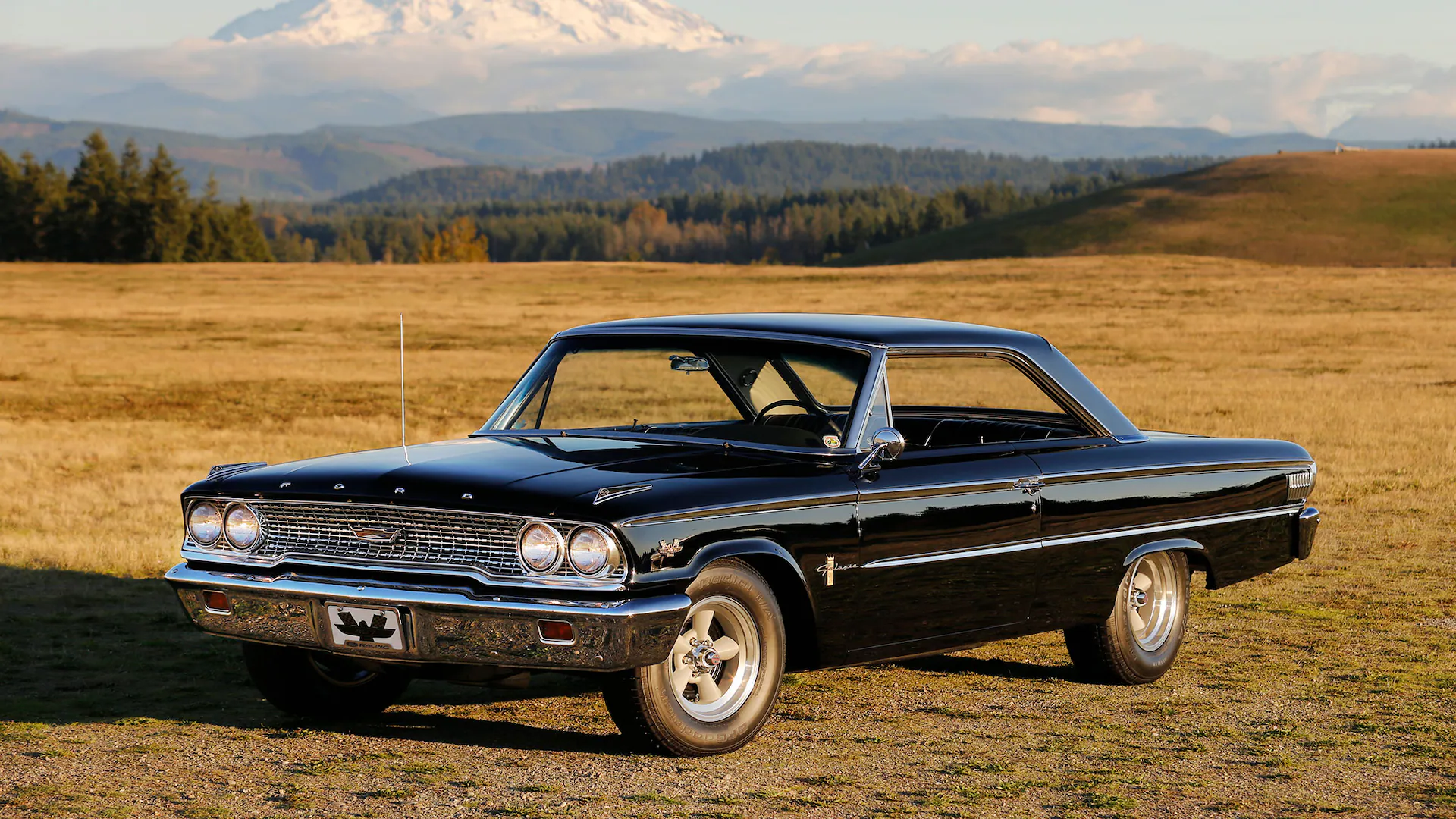
The R-Code variant was equipped with Holley 650 four-barrel carburetors, making it the more aggressive of the two. Production numbers were limited, with only 3,857 R-Code Galaxies built that year.
Buyers had the option to choose between a convertible, a hardtop, or a sleeker sports hardtop model for improved aerodynamics.
The legendary 427 engine later found its way into high-performance Ford models such as the 1967 Shelby GT500 and the Shelby Cobra 427. It remained in production until 1967, when it was succeeded by the renowned Ford 428 Cobra Jet.
2. Chevrolet Corvette C3 L88: 430 HP
Specifications
- Engine: 427 cubic-inch V8
- Power: 430 hp
- Torque: 450 lb-ft
The L88 Corvette remains one of the most underrated models in the Corvette lineage, largely because Chevrolet kept it a secret.
Produced in very limited numbers and marketed as a race-spec vehicle, the L88 Corvette was built for serious performance.
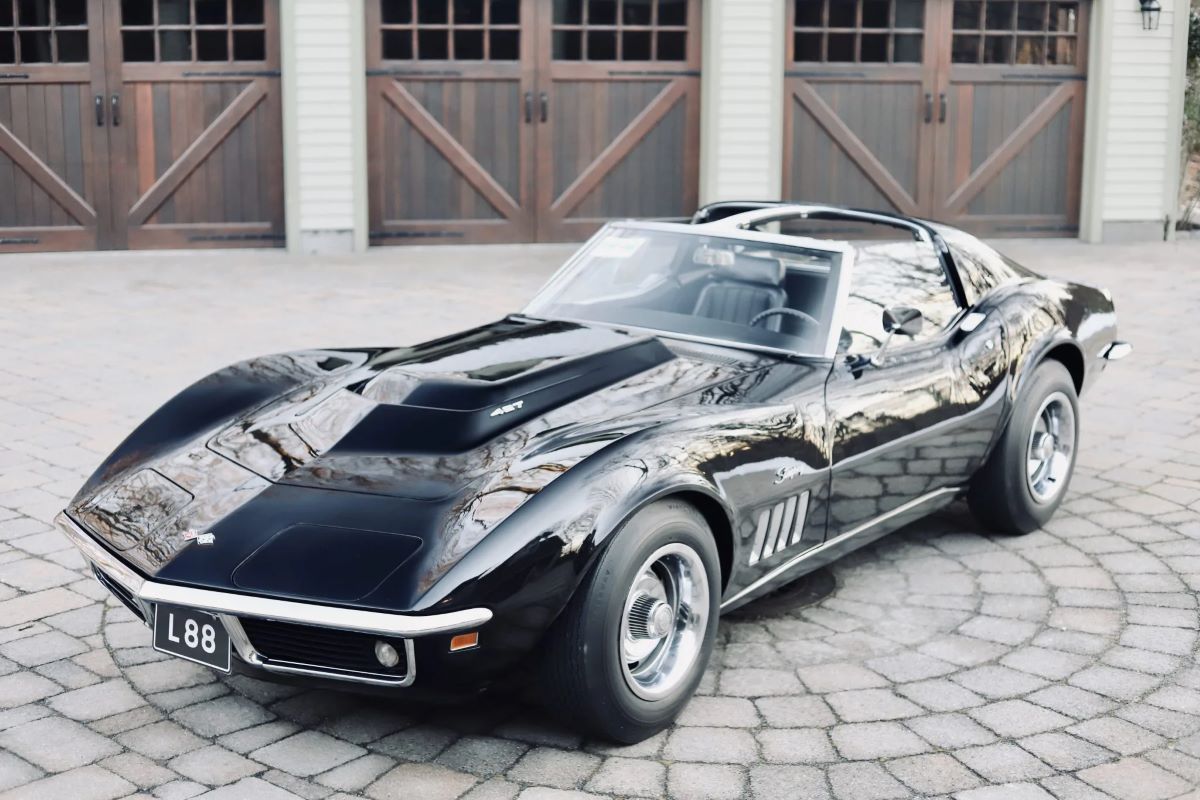
Chevrolet manufactured only 216 units between 1968 and 1969, making it an exceptionally rare classic today.
For those familiar with the L88, it’s well known that its official 430 horsepower rating was a severe understatement. In reality, the engine’s true output was much higher, with estimates often placing it around 500 horsepower.
Some sources, including Hemmings, suggest it could have been closer to 550-560 horsepower. Given its rarity and performance pedigree, an L88 C3 Corvette commands a hefty price tag today, with Classic.com reporting average sales exceeding $300,000.
1. Chevrolet Chevelle SS 454: 450 HP
Specifications
- Engine: 454 cubic-inch V8
- Power: 450 hp
- Torque: 500 lb-ft
The 1970 Chevrolet Chevelle SS 454 needs no introduction. It stands as the most powerful naturally aspirated big-block V8 muscle car of the 1960s, cementing its status as one of the most desirable classic muscle cars among collectors and enthusiasts.
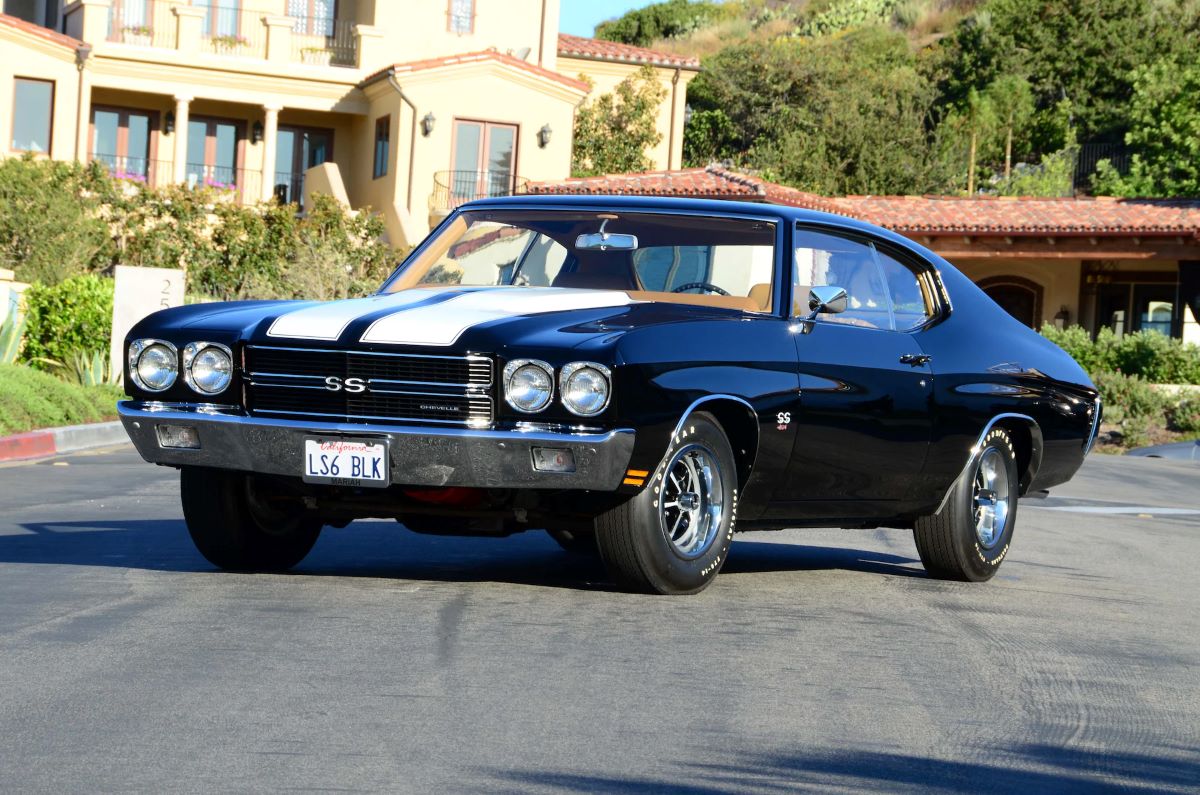
With an astonishing output of 450 horsepower and 500 lb-ft of torque, it set a new standard for raw performance.
This legendary 454 V8 powered not only the Chevelle but also other iconic Chevrolet models, including the El Camino.
With a 0-60 mph time of just 5.4 seconds, the Chevelle SS 454 was blisteringly fast for its time and still holds its own against modern muscle cars.
However, tracking one down at a reasonable price today is nearly impossible these machines fetch premium prices due to their performance, rarity, and historical significance.
Also Read: Top Budget-Friendly Electric Cars of 2025 That You Can Buy

